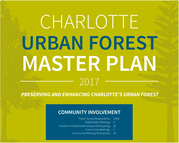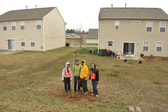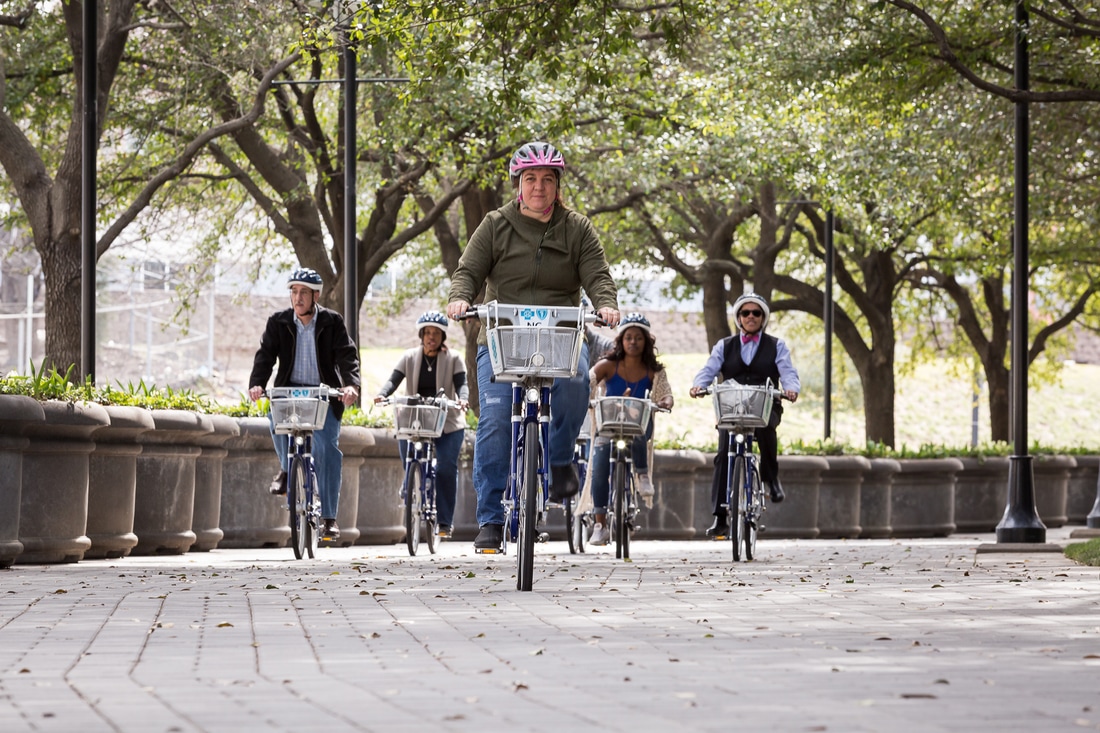A long-term strategic plan to preserve and care for Charlotte's tree canopy.
|
Charlotte, North Carolina is proud to be known and valued for its vibrant urban tree canopy. When viewed from above, tree canopy covers 47% of the city, which makes Charlotte one of the highest canopy cities in the U.S. On top of the aesthetic benefits Charlotte's trees provide, the city receives over $335 million in real benefits and services from these trees every year.
Despite these valuable benefits, the city's tree canopy is at risk. The two most pressing concerns are a large population of mature trees reaching the end of their natural lifespan, along with significant losses from development as the city grows. Loss of tree canopy results in serious public health issues, including poor air and water quality, and declining communities and wildlife habitat. To ensure that this canopy is preserved and maintained for generations to come, both the City of Charlotte and TreesCharlotte have spent much of 2016 proactively working to identify the greatest challenges facing this important city asset, as well as the most comprehensive ways to reach the city's 50% canopy goal by 2050. Thanks to involvement of over 40 organizations, almost 3,000 public citizens, and the urban forestry expertise and national perspective provided by Davey Resource Group, a clear path forward has been established through twelve action steps. |
Download the 2017 Charlotte Urban Forest Master Plan summary document (PDF). |
PLAN IMPLEMENTATION PROGRESS TO-DATE
Last updated April 2020
There has been progress made in these actions steps over the last 4-5 years, though there is much still to be done. Below is an update on the work done to-date within each of these action steps..
Part 1: Get a Team Together
Because over 80% of the city's tree canopy is located on private land, real progress can only be made from a larger community team. The first three action steps focus on forming a structure of organizations that will be critical to tackling the remaining work.
ACTION STEP 1: Canopy Team Formation
A "Canopy Team" will be developed to allow implementation through partnership.
Progress Report: Status/Update: The initial attempt to form a Canopy Team was made in 2017, but has since lost momentum. The City is moving forward with a second attempt in 2020 to build a Canopy Team. Learn more.
ACTION STEP 2: Redefine/Expand the Partnership between TreesCharlotte & City of Charlotte
Progress Report: Status/Update: This is a constantly evolving relationship. Updates will be provided as they become available.
ACTION STEP 3: Engage the Neighborhoods
Efforts to better engage neighborhoods are critical to support tree canopy efforts at the local level.
Progress Report: Status/Update: Not yet begun.
ACTION STEP 1: Canopy Team Formation
A "Canopy Team" will be developed to allow implementation through partnership.
Progress Report: Status/Update: The initial attempt to form a Canopy Team was made in 2017, but has since lost momentum. The City is moving forward with a second attempt in 2020 to build a Canopy Team. Learn more.
ACTION STEP 2: Redefine/Expand the Partnership between TreesCharlotte & City of Charlotte
Progress Report: Status/Update: This is a constantly evolving relationship. Updates will be provided as they become available.
ACTION STEP 3: Engage the Neighborhoods
Efforts to better engage neighborhoods are critical to support tree canopy efforts at the local level.
Progress Report: Status/Update: Not yet begun.
Part 2: Tackle the To-Do List Together
Several next steps for this project have been defined to help reach the 50% canopy goal:
ACTION STEP 4: Update the Tree Canopy Assessment. All work should be based on solid data findings. An updated UTC and change analysis is key.
Progress Report: Status/Update: The canopy assessment was updated in 2018 using 2016 aerial imagery data. Learn more.
ACTION STEP 5: Initiate a Citywide Identity Campaign. Charlotte is unique because of its canopy. Education and awareness can stem from city pride.
Progress Report: Status/Update: A logo was designed and a soft roll-out completed in 2018.
ACTION STEP 6: Connect Expertise and Resources Where Most Needed. Large trees are expensive to maintain yet extremely valuable to the community. This position could fill the gap in expertise to help residents of all income levels make good tree care decisions.
Progress Report: Status/Update: A pilot program was run in 2018-19. Learn more.
ACTION STEP 7: Explore Corporate Partnership Opportunities. Charlotte's corporate community is extensive but not yet fully engaged in tree canopy efforts.
Progress Report: Status/Update: TBA
ACTION STEP 8: Further Study Impacts from Development. Is the tree protection ordinance effective?
Progress Report: Status/Update: A full review of the existing codes and regulations s starting through a new project. Learn more.
ACTION STEP 9: Refine and Improve Communication and Education.
Progress Report: Status/Update: TBA
The final three action steps focus on how city staff can improve proactive management of public trees:
ACTION STEP 10: Complete and Update Tree Inventory Data
Progress Report: Status/Update: A phased-approach to updating the tree inventory data is underway. Learn more.
ACTION STEP 11: Formalize a Management Plan for Public Trees
Progress Report: Status/Update: The City of Charlotte completed an urban forest management plan in 2018 to improve internal operations for managing the existing public trees. The implementation of these processes is in process currently.
ACTION STEP 12: Refine the Public Tree Planting Strategy
Progress Report: Status/Update: This work was included in the management plan above.
ACTION STEP 4: Update the Tree Canopy Assessment. All work should be based on solid data findings. An updated UTC and change analysis is key.
Progress Report: Status/Update: The canopy assessment was updated in 2018 using 2016 aerial imagery data. Learn more.
ACTION STEP 5: Initiate a Citywide Identity Campaign. Charlotte is unique because of its canopy. Education and awareness can stem from city pride.
Progress Report: Status/Update: A logo was designed and a soft roll-out completed in 2018.
ACTION STEP 6: Connect Expertise and Resources Where Most Needed. Large trees are expensive to maintain yet extremely valuable to the community. This position could fill the gap in expertise to help residents of all income levels make good tree care decisions.
Progress Report: Status/Update: A pilot program was run in 2018-19. Learn more.
ACTION STEP 7: Explore Corporate Partnership Opportunities. Charlotte's corporate community is extensive but not yet fully engaged in tree canopy efforts.
Progress Report: Status/Update: TBA
ACTION STEP 8: Further Study Impacts from Development. Is the tree protection ordinance effective?
Progress Report: Status/Update: A full review of the existing codes and regulations s starting through a new project. Learn more.
ACTION STEP 9: Refine and Improve Communication and Education.
Progress Report: Status/Update: TBA
The final three action steps focus on how city staff can improve proactive management of public trees:
ACTION STEP 10: Complete and Update Tree Inventory Data
Progress Report: Status/Update: A phased-approach to updating the tree inventory data is underway. Learn more.
ACTION STEP 11: Formalize a Management Plan for Public Trees
Progress Report: Status/Update: The City of Charlotte completed an urban forest management plan in 2018 to improve internal operations for managing the existing public trees. The implementation of these processes is in process currently.
ACTION STEP 12: Refine the Public Tree Planting Strategy
Progress Report: Status/Update: This work was included in the management plan above.
Part 3: Next Steps & Measuring Progress
All tasks within all twelve action steps have been combined and prioritized into an achievement timeline, combined with benchmarks and metrics to measure progress.




